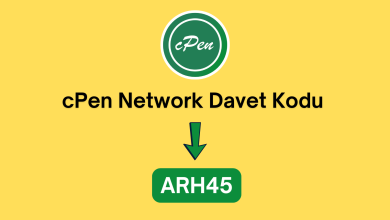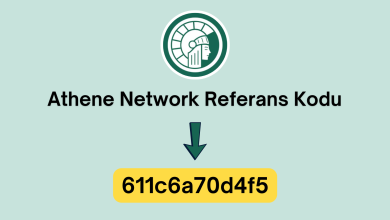Feroz Ahmed – Turkey: The Quest for Identity

STUDY OF “TURKEY & THE QUEST FOR IDENTITY”
It is artful to fit the Ottoman Empire history of 623 years in 250 pages. Feroz Ahmad showed this art in his book “Turkey & The Quest for Identity”. To be honest, our historiography is not old and rich as our history. For this reason, it is very important to create works as course book particularly in the field of Ottoman history. Looking at the cases from outside, Feroz Ahmad provided us to see and learn many things that we could not see.
Although the book was written from an objective perspective, it is not possible to mention a total objectivity due to the subjectivity of the author. For example; the expressions “The accused were acquitted and lauded as nationalists who had struggled against a subversive ideology, i.e. communism! Pan-Turkism was an instrument to be employed in the game of international politics.” in the part about Turkism-Pan-Turanism cases of 3rd May 1944, the book introduced Huseyin Nihal Atsız and the other Turkish people, tried in the court, as the individuals being an instrument to the international politics. In my opinion, the other interesting thing in the book was that Alparslan Türkeş was defined as neo-fascist. It is not possible for an idea originated from Italy to be adopted by the total community.
Another criticism that I can make about the book is the statement of one page starting with “Because it was secular and supported RPP, the Grey Wolves now targeted the Alevi community…” in Çorum and Kahramanmaraş events as these started after the ethnical studies conducted by Alexander Peck, USA Ambassador, in the region. Moreover Alexander Peck met the provincial heads of Nationalist Movement Party (MHP), (AP) and Republican People’s Party (CHP) in that region. It is a big mistake to show Nationalist Movement Party as the sole responsible of the events. My last criticism about the book is that the book never mentioned Gün Sazak because the last straw in coup d’état of 1980 was the martyr of Gün Sazak.
This study of Feroz Ahmad, who analyzed the effort of Turkey, to exist and to create an identity under the periodical conditions for the last six hundred years, with the internal and external factors that were effective in this process, merits extremely being a reference book for Turkey’s history. It is possible to say that the book was impeccable excluding the idea that directs the reader wrong about before and after 1980. Particularly, the part mentioning the foundation of Ottoman Empire to its last days was completely told. And it embellished the book to mention about Nasreddin Hodja as one of the important pieces of Turkish culture.
Section 1: Ottoman Empire – Foundation, Rise and Dissolution
Feroz Ahmad starts his book “Turkey & The Quest for Identity” with the foundation of Ottoman Empire. He questions why Ottoman Empire stood among the other seigniories although there were many in the Anatolian geography that time. Successful in existing for 623 years with the ideal to be the king of the world, Ottoman Empire achieved this with its leniency policy based on religion and its holy war understanding. Ottoman Empire examined very well the outcome of the states who oppressed their people and who applied the hired soldier system in military and it learnt from the history. It improved its military influence by establishing it on the basis of religion with holy war system. Taking the risk to die for their belief and ideal, to martyr as Islamic idiom, the soldiers were the biggest factor for the footprints of Ottoman Empire in three continents. Thanks to the sultans and the systemic application of holy war and jihad understanding, the state could survive for 6 centuries. Explaining the rise of the state after its foundation, the author gave big place to Mehmed II. He argued that Mehmed II had been the most important sultan of Ottoman Empire due to the conquest of Istanbul, the leniency policy, extending the frontiers, discouraging the power of the seigniories, etc.
After the geographical discoveries, the Ottoman lands lost their commercial importance and the state entered into the decline period because of the excessive expenses made in the conquered lands. The reasons of entering into decline were not just economic. Having lands on three continents that time, Ottoman Empire had administration problems in decline by giving authorizations to grand viziers and bureaucrats to resolve the administrative problems. Despite all these economic, administrative and military problems, Ottoman Empire succeeded in surviving until the 18th century.
The military superiority of Ottoman Empire ended with the breakdown of guild of janissaries. Resulting from the decrease of purchasing power in the country, janissaries wanted more salaries. Trying to meet this with money having small rate of gold, Ottoman Empire failed and could not prevent janissaries from having profession other than military service. Janissaries became alone as the ulama group and artisans stopped supporting them and they fell into disfavor as a result that the Greek rebellion could not be squashed. On 6th June 1826, Mahmud II bombarded and demolished the guild of janissaries in Istanbul, the other janissaries were executed and then the guild of janissaries was totally removed. The removal of the guild was called “Auspicious Incident” in our history.
After the removal of the guild of janissaries, the biggest obstacle for the improvements, Mahmud II established a new modern army called “Asakir-i Mansure-i Muhammediyye (The Victorious Soldiers of Muhammad)”. Military College was established to meet the military officer need of the army. In this period, the students were sent to Europe to learn modern methods in education and military fields. For the success of the army, the relation between the army and the religion was removed. Although “Asakir-i Mansure-i Muhammediyye” resisted well in its first war against the Russian, it was beaten as they were few in number. Ottoman officers became the leaders of improvements with the modern education they had. This army had important success in the following years.
Upon the death of Mahmud II, Abdulmecid took the place and supported the continuation of the reforms. It was foreseen that English support would be taken depending on the modernization of Ottoman Empire. In this period, a reform process called “Tanzimat” began covering the years of 1839-1876.
Hoping that its existence and unity would be protected, Ottoman Empire announced the Imperial Edict of Gulhane (Tanzimat) in 1839 and the Royal Edict of Reform in 1856. The reforms performed upon the request of the foreigners debilitated the country, civil rebellions were stimulated and the dissolution period accelerated. The purpose of the edicts was to improve the rights of the minorities and then to prevent the independence ideas of the nationalities. To mention about the points of the Royal Edict of Reform related to our subject, it was definitely forbidden to say definitions and qualifications that were pejorative for the other class in the issues such as sectarian and language. Besides, the most important right given to the non-Muslims was that everybody was able to swear in his/her own language in the courts. Again, each community was able to establish schools under the supervision of the relevant ministry. These articles are the equivalents of the articles, suggested to us today by the Law of Harmonization Code of the European Union and by the Copenhagen Criteria, in Ottoman Empire.
In 17th century, the two democratic edicts announced and the rights given to the minorities could not prevent Ottoman Empire from losing the Balkans. The price of the edicts was paid by losing the Rumelia.
In this period, an enlightened group appeared under the name of “New Ottomans”. Among them, there were Nazım Hikmet, called homeland poet, Yusuf Akçura, famous with “Three Types of Politics”, etc. These people had the opinion that the reason of Ottoman Empire’s underdevelopment had not been Islam but its transformation into a part of the world market.
Abdulhamid paid importance to the educational reforms in this period. However, these reforms caused the failure of the regime. Starting these reforms, the sultan merely dug his own grave. The education among the Muslim population could not reach the speed of the education among the non-Muslims. The negligence of primary education increased the illiteracy rate in the society.
Although it was long time that the guild of janissaries had been removed, its traces in the army was going on. In the period of Abdulhamid, there were two ways to be officer: by going to the school and by being self-educated. The scholars were the young officers who finished the pressure era and the self-educated officers were those who depended on the sultan and who were illiterate. This duality brought along the conflict in the army. The movement of idea was not Turkish nationalism before the World War I but there was an increasing nationalism among the unionists. After the war, Turkish nationalism replaced Ottomanism.
In those years, the most important development was the formation of the bourgeoisie class in Ottoman Empire. With the purpose to keep up with the changing economic system, Ottomans tried to create their own bourgeoisies. It became the duty of the unionists to popularize this bourgeoisie among the people. Thus, small commercial organizations and banks were established with the leadership of Committee of Union and Progress. After abolishing the capitulations, the big landlords became rich by exporting their products. These people formed the backbone of the nationalist movement that was against the application of the divisive articles of The Treaty of Sevres.
Constitutional Monarch II changed the mind of Ottoman people ad introduced them the terms of “homeland and nation”. If this period didn’t exist, the country would rest as the “common good of dynasty” and it would not be possible to start the war of independence.
Young Turks, formed with the famous people of the period, created a conscious society with their bourgeoisie class. The members of this group formed the Countrywide Resistance Organizations that was the backbone of the War of Independence. The Greek troops in Izmir became a common factor that transformed into the war of independence in a short time. Organizing the congress raising awareness in the people and Mustafa Kemal and his friends organized the people. In 23rd April 1920, Grand National Assembly of Turkey was established and the foundations of the new Turkish country were laid. Later the war of independence totally started and ended in 9th September 1922 by regaining Izmir.
Section 2: Foundation of Modern Turkey
Mustafa Kemal strengthened the position of Turkey against the big powers of the world during the formation of modern Turkey and had an important role in establishing the Turkish Republic. With the republic, Mustafa Kemal and his friends didn’t want to govern the country with the traditional society rules. Thus, the revolution period began following the proclamation of the republic. Abolition of the sultanate and starting using the Latin alphabet rather than the Arab alphabet were the most important developments for the formation of new Turkey. However, there were big problems particularly in starting using the Latin alphabet. The people who knew Ottoman Turkish became illiterate in one night. This case has survived until today as a question of debate.
The ideology of the new republic was also determined. Upon the statement “How happy is he who says I’m Turk” by Mustafa Kemal, everybody living in Turkey would be called Turk. A nationalism understanding refusing the racism became the main ideology of the country. In this period, the concept of laicism, which has come until today as a discussion matter, was also adopted as an ideology.
In the period of Ataturk, between the years of 1923-1938, a new identity was obtained and it was tried to create an independent nation in every field. And for this, etatism policy was applied until 1930s and it was paid importance to industrialism. Many plants from textile to nutrition were established resulting from industrialism. To create a national market, the country was “surrounded” with railways. In this period, Turkey was able to feed itself and even exported some products.
The innovations performed in politics were the most important characteristic of the period. In 1930s, the right to elect and to be elected was given to women. Although it was interrupted, multi-party system was tried and the freedom of expression became more popular. When Ataturk was died in 1938, the population grew during republic worried very much. The thought that the government of the country would be different afterwards became the worry of the new population. For this reason, the intendants after Ataturk had the difficulty to establish their own authorities to govern the state.
World War II weakened the improvements obtained as of the republic. Extending the working hours, removing the holidays and increasing the hidden taxes led the country into a dead end. During the years when the bread was given upon rationing, the entire group became stranger to the regime resulting from the obligatory collection of agricultural products. After the end of World War II, Inonu realized the change of the world. Defeat of Germany weakened the regime of single party regime in Turkey.
With the foundation of Democratic Party in 1946, the end of the period “National Chief” was seen. Taking the road with the policies such as limiting the welfare state and improving the individual rights and freedoms, Democratic Party addressed the people. The ultimate victory of the democratic people in the elections of 1950 created a milestone in Turkey. The first winners of the multi-party elections, the democratic people gave hope to the population. Lands were distributed to the villages not having lands and machinery agriculture started to be used but Menderes started seeking credit after the financial crisis. Upon the credit support by the USA, the allowances were increased for substructure, roads and factories. The expenses of the army, spending more than the NATO countries, were decreased. The young officers sent to NATO countries for education started to make reforms in Turkey. The military coup was performed in 27th May 1960 resulting from the plans of subheading officers.
After the coup d’état, a new constitution was prepared in 1961. After the constitution of 1961, known as the most liberal constitution of the country history, the conflicts between the rightists and the leftist started. In 1970s, there were deaths almost everywhere of the country resulting from these conflicts. Upon the increasing disorder, the commanders announced memorandum and Demirel had to resign. After the failure of Nihat Erim, assigned to establish a supraparties government, Bulent Ecevit started to govern the country. The dead of 35 workers in Taksim in 1977, the deaths of Ilhan Egemen Darendelioglu, from te nationalist community, and of journalist Abdi Ipekci, from the leftists, signaled a new coup d’état. Also, the minister of customs of the period Gün Sazak was killed in her house. With the sentence “We seize the power to reestablish the lost state authority” by Kenan Evren, Turkey entered into a new period of coup. A new constitution was prepared after the revolution of 1980 as after the one of 1960.
After the coup d’état, many political parties were closed and the leaders were imprisoned. Motherland Party (ANAP) of Turgut Ozal came to power unexpectedly. Adopting the new public management, Ozal made many regulations qualified as revolution in this field. Ozal became the president by removing the political prisoners. In this period, the Kurdish rebellion in the south east of the country, the rising voice of the Islamists signaled a new military revolution but the government prepared a anti-terror law and succeeded to silence the voice of coup.
The army began to fight against Kurdistan Workers Party (PKK). Upon Susurluk case, the alliance between the state and the mafia, called “secret state”, came to light. Nationalist Abdulah Catlı, deputy Sedat Bucak and vice chief of police Huseyin Kocadag were in the same car in Susurluk accident. After this dark period when the lights were on and off for enlightenment, the Islamists became active in politics. However, politics was prohibited to Erbakan with post-modern coup and Welfare Party was closed. Entrapment of Abdullah Ocalan, the leader of PKK, in 1999, created a nationalism in the country. Resulting from the elections, Motherland Party-Nationalist Movement Party created a coalition. Their first aim was to improve the economy but the earthquake of 1999 interrupted the economic plans. The quarrel between the president Necdet Sezer and Ecevit and the fact that Sezer threw the constitution caused the biggest economic crisis in the history of the republic. As a result of the elections in 3rd November 2002, unexpectedly Justice and Development Party (AKP) came to power alone and a new period started.







